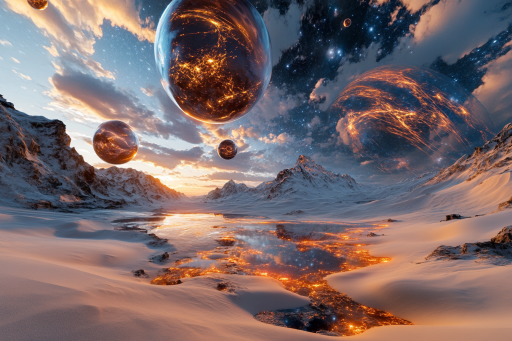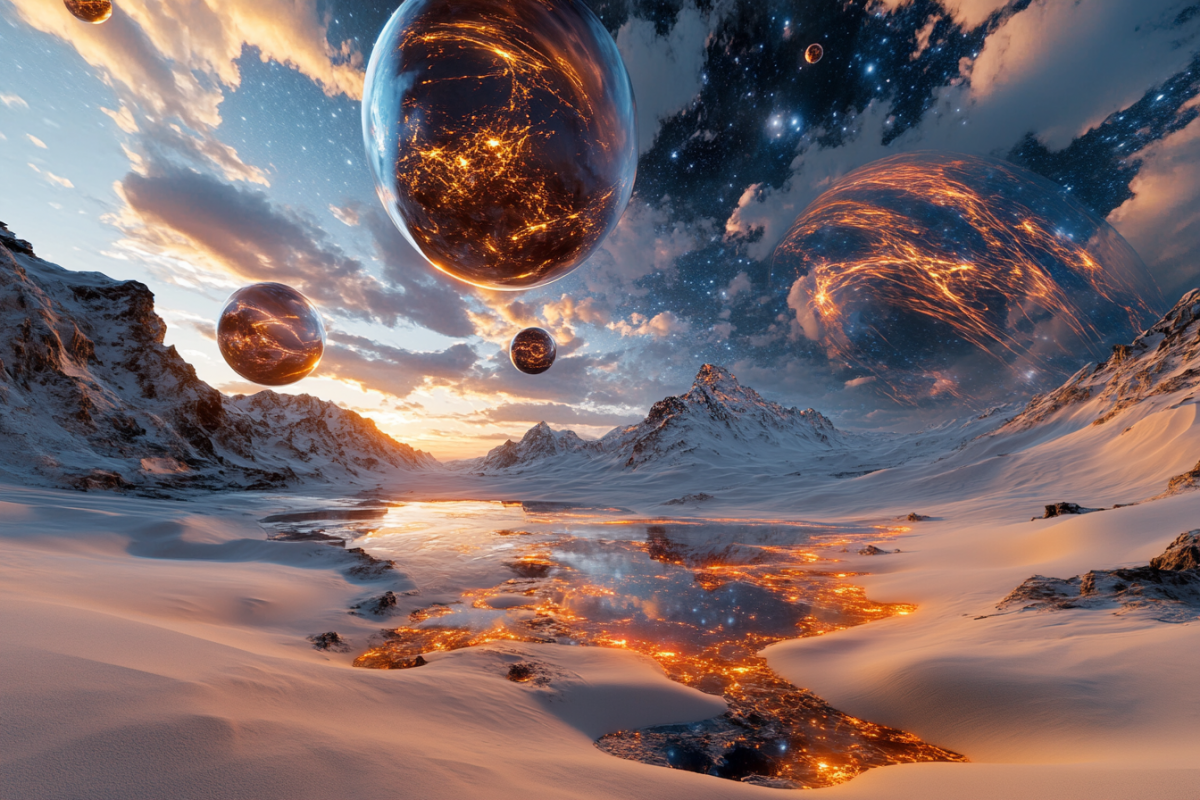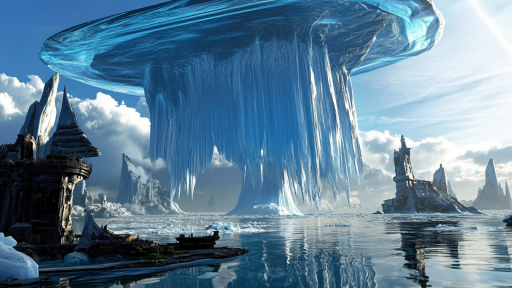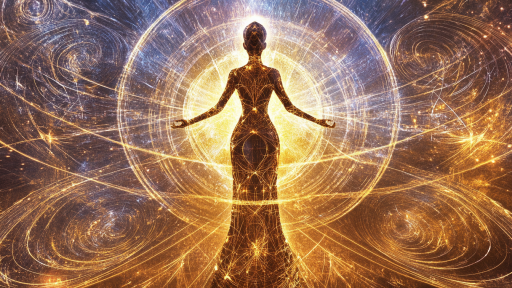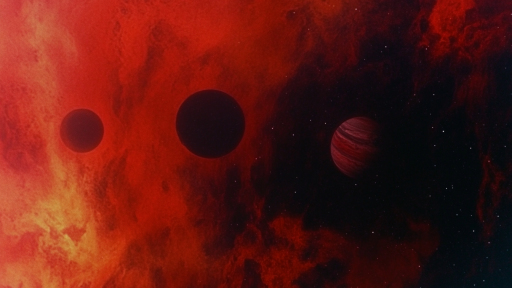
The wonders of space often seem far removed from our everyday world, but nature has a way of mirroring the cosmos in the most unexpected ways. From swirling galaxies to glowing nebulae, Earth’s landscapes, creatures, and natural phenomena have evolved striking resemblances to celestial events. Whether in the depths of the ocean, the vastness of the desert, or even within microscopic organisms, echoes of the universe are hidden all around us. Explore the surprising ways nature has evolved to mimic the grand designs of space.
Bioluminescent Oceans Resemble the Glow of Nebulae

Some ocean waters light up with an eerie blue glow, caused by bioluminescent plankton that react to movement. This shimmering, star-like effect mirrors the glowing clouds of interstellar nebulae, where cosmic dust and gases create radiant colors in deep space. Just like the vast expanse of a nebula, these glowing waves turn the ocean into a mesmerizing cosmic illusion.
Desert Sand Dunes Form Patterns Like Planetary Rings

The massive, shifting dunes of Earth’s deserts bear a striking resemblance to the rings of Saturn and other gas giants. Wind-driven patterns create rippling waves and circular formations, much like the gravitational forces shaping planetary rings. These endless, golden landscapes offer a glimpse of what it might be like to walk on a distant, dust-covered exoplanet.
Lightning Sprites Look Like Cosmic Plasma Bursts

High above thunderstorms, bizarre red and blue flashes known as sprites shoot into the upper atmosphere, resembling deep-space plasma ejections. These electrified bursts mirror the way cosmic jets spew from black holes and neutron stars. Just as these celestial events send energy across galaxies, sprites release intense bursts of energy into Earth’s skies.
Glowing Caves Resemble Alien Worlds

Glowworm-lit caves in places like New Zealand create an underground sky of twinkling blue lights, resembling an alien planet or deep-space star cluster. The eerie luminescence is caused by bioluminescent larvae, forming an illusion of infinite cosmic depth. These caves feel like stepping into the heart of a distant galaxy, hidden right beneath our feet.
Auroras Are Earth’s Own Solar Storms

The dazzling colors of the Northern and Southern Lights mirror the energetic storms seen across the surfaces of stars. Charged particles from the Sun collide with Earth’s atmosphere, creating vibrant green, purple, and blue waves of light—just like solar flares erupting from the Sun’s surface. This earthly phenomenon offers a glimpse into the powerful forces shaping stars across the universe.
Mushroom Spores Disperse Like Cosmic Dust

When certain mushrooms release their spores, they create clouds of tiny, airborne particles that resemble cosmic dust floating through space. Under the right lighting, these microscopic spores swirl like interstellar matter, hinting at the unseen similarities between the smallest and largest scales of the universe. This eerie, drifting dust is nature’s version of the birth of planets.
Deep-Sea Vents Look Like Black Hole Accretion Disks

On the ocean floor, hydrothermal vents spew superheated water and minerals, creating glowing plumes in the darkness. These vents, surrounded by swirling, spiraling material, bear a striking resemblance to the accretion disks around black holes. Just as these cosmic giants pull in matter, deep-sea vents create a gravitational pull on marine life in the abyss.
Salt Flats Reflect the Sky Like a Cosmic Mirror

During the rainy season, salt flats like Bolivia’s Salar de Uyuni become massive mirrors, perfectly reflecting the sky. This surreal landscape looks like a portal to another dimension, much like the reflective gas clouds surrounding young stars in space. The seamless blend of land and sky makes it feel like walking in a zero-gravity void.
Snowflakes Mimic the Fractal Beauty of Galaxies

Each snowflake is a miniature masterpiece, growing into intricate fractal patterns that resemble the spiral arms of galaxies. Their symmetrical beauty follows the same mathematical rules that govern cosmic formations, from hurricanes to the structure of the Milky Way. Just as no two snowflakes are the same, no two galaxies are identical.
Volcanic Eruptions Resemble Supernova Explosions

When a volcano erupts with violent force, it sends shockwaves, plumes of ash, and glowing lava into the sky—just like the death throes of a collapsing star. The immense energy of volcanic eruptions mirrors the cosmic spectacle of a supernova, where a star’s final explosion reshapes the universe around it. Both events are forces of destruction and creation.
Ice Circles Form Like Planetary Vortexes

In freezing rivers and lakes, spinning ice disks naturally form, slowly rotating in place like miniature planets. These rare formations are created by a combination of temperature shifts and water currents, mimicking the vortex-like behavior of giant storms on Jupiter and Saturn. Nature once again mirrors the mechanics of space, shaping frozen orbits in Earth’s waters.
Nature and the Cosmos: A Reflection of the Same Forces

The universe and the natural world may seem separate, but they are both governed by the same physical laws, shaping them in eerily similar ways. Patterns in nature—from glowing seas to spiraling storms—mirror the grand designs of galaxies and nebulae. Perhaps the most surprising realization is that, in many ways, Earth itself is just another piece of the cosmos, reflecting its mysteries in unexpected ways.

